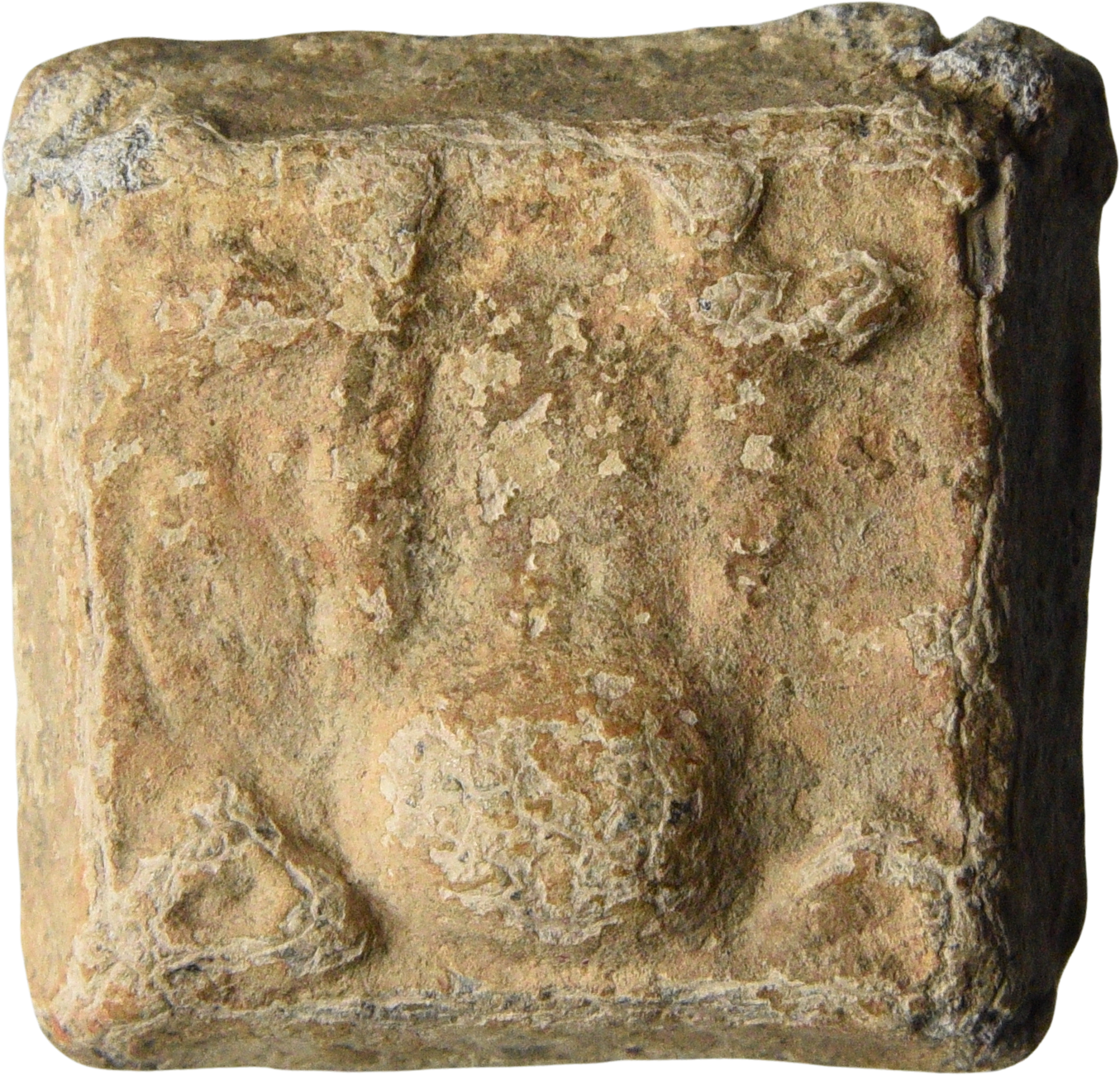
-
Copyright credit: Tekin 2024

-
Copyright credit: Doğan Gürbüzer 2020

ARCHAEOLOGICAL DESCRIPTION OF THE WEIGHT
Authority
Mint
Colophon
Denomination
2 Staters
,
1/12 Mina
Material
Lead
Manufacture
Cast
Shape
Square
Length
2.70 cm
Width
2.70 cm
Height
0.70 cm
Metrology
| Mass (g) | Mass (grain) | Date of measurement | Reference | fragmented | cleaned | reference weight |
|---|---|---|---|---|---|---|
| 44.71 | - | - | Tekin 2016 | No | No | Yes |
| 44.61 | - | - | Doğan Gürbüzer 2020 | No | No | No |
| 44.70 | - | - | Tekin 2024 | No | No | No |
Iconography
| Symbol | Technique | Direction | Position | Number | Synecdoche |
|---|---|---|---|---|---|
| Lyre / Cithara | Relief |
Wear
Corrosion
Handle
No
Suspension hole
No
Recarved mould
No
Recarved weight
No
Intentionally destroyed
No
Archaeological description
Tekin 2024: Colophon. Dodekaton? Pb 44.70 g, 27x27x7 mm. Inv. no. 91.11.90. Find place: Değirmendere-Colophon. Acquired in 1990. Lead weight, square in form. On the obverse, lyre; on the bottom left, Δ and on the bottom right, Ω or Α. So, the two letters on the bottom left and right is either Δ − Ω (for Δωδέκατον - Dodekaton) or Δ − Α (for Δαμόσιον − Damosion). However, we know that Colophon was a city of Ionia and used Ionian dialect; furthermore, in the inscriptions it appears as 'demos' instead of 'damos' for the Colophonian assembly. Besides, no. 2 of Colophon in this catalog it reads Δ − Η. Therefore, it is more likely that the letter at the bottom right is omega rather than alpha. The unit could also be interpreted as distater since its mass corresponds to a distater. In summary, it seems that these two letters are Δ − Ω and denote a dodekaton (1/12 mna, mna of 536.4 g). The lyre, being the symbol of Colophon, indicates that this weight might have been produced and used there. It dates to the Hellenistic period.
Autopsy
No
INSCRIPTION
| Language | Technique | Legend type |
|---|---|---|
| Greek | Relief | Denomination, Legal status |
Fac simile
Δ Α? or Ω?
Edition
Δ–ι̣(στάτηρον?) or Δ–η(μόσιον?) or Δ–ω(δέκατον?)
Monogram
ARCHAEOLOGICAL CONTEXT
Findspot (region)
Türkiye: İzmir
Findspot (site)
Değirmendere [Colophon]
context
CIRCUMSTANCES OF ACQUISITION
Region
City
Date of first acquisition
Dec. 31, 1990
circumstances
DATING OF THE WEIGHT
Curatorial Section
GREEK
Time frame
FROM
-400
TO
-1
Comments on Chronology
COLLECTION HISTORY
Collection
| Name | Date of acquisition | Inventory number |
|---|---|---|
| Ephesus Museum | Dec. 31, 1990 | 91.11.90 |
Bibliography
| Reference | Page/Column | Reference (number) | Plate / Figure | Comment |
|---|---|---|---|---|
| Tekin 2016a | 111–113, 203–205 | 14 | pl. 31/238 | None |
| Doğan Gürbüzer 2020 | 184–185 | None | Fotoğraf 6 | None |
| Tekin 2024d | 140 | 8 | fig. 8 | None |
VARIA